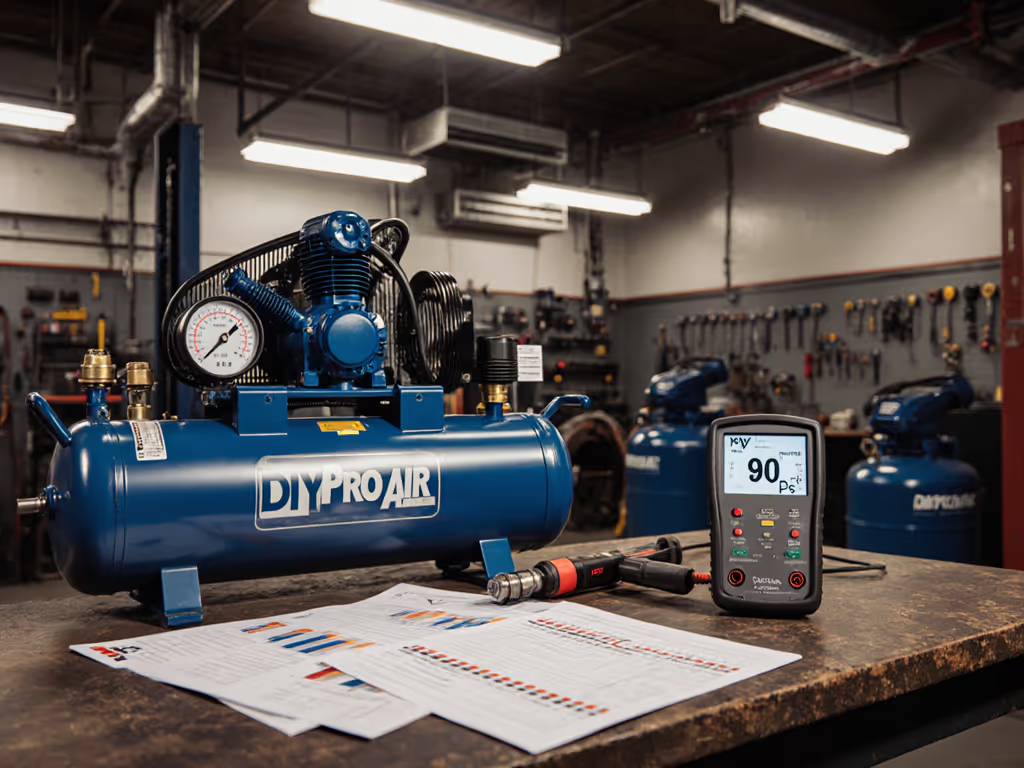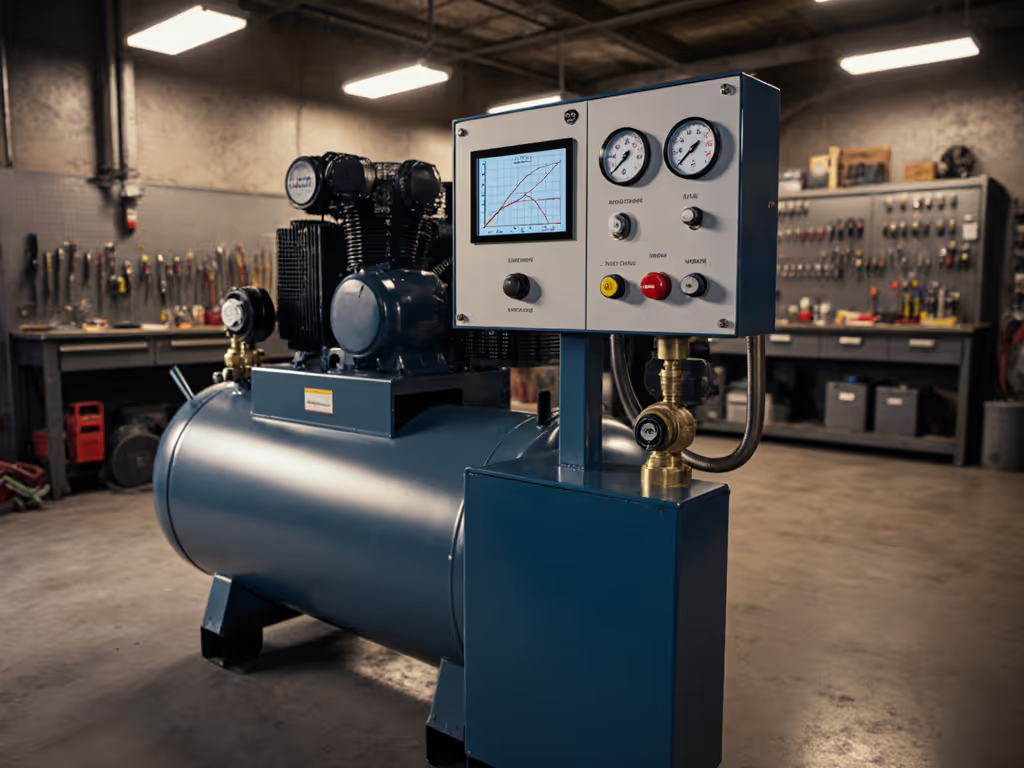
IoT Air Compressor Technology Explained: Sensors to Cloud
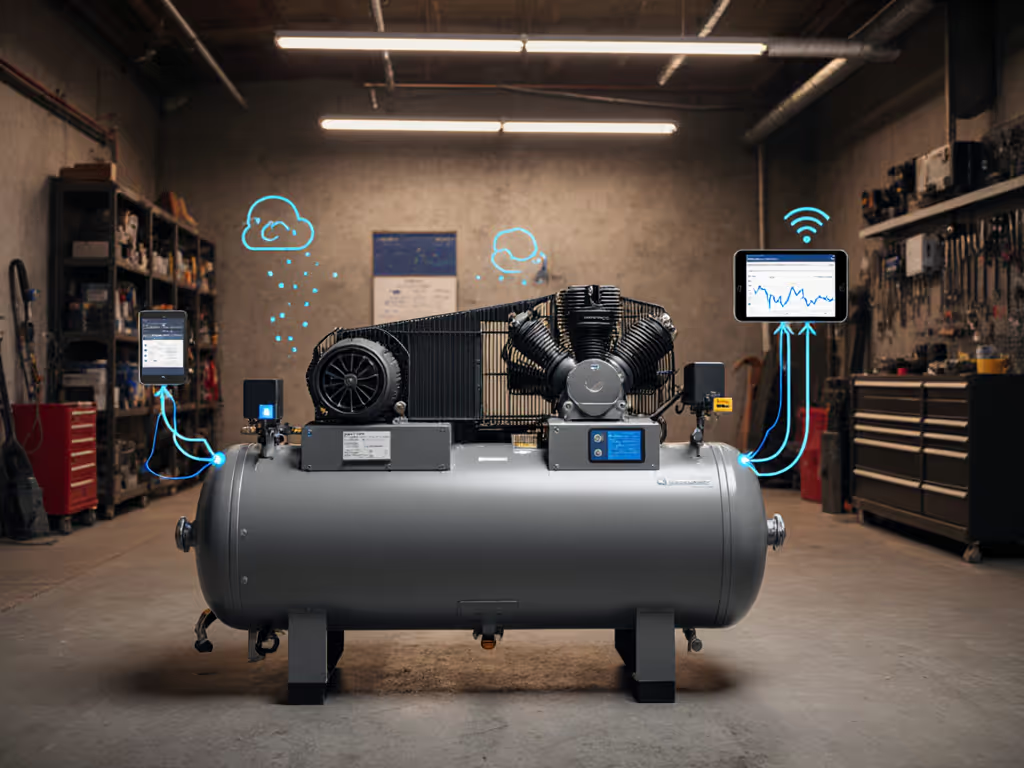
In today's modern workshop, understanding IoT air compressor technology isn't just for tech enthusiasts (it is becoming essential for anyone who values both productivity and peace of mind). Smart compressor monitoring systems are transforming how we manage noise, efficiency, and workflow in our shops, providing concrete data where we used to rely on guesswork. As someone who's measured A-weighted and unweighted dB at 1 m across countless workshops, I've seen how these systems can objectively address the fatigue and errors that excessive noise introduces.
Frequently Asked Questions: IoT Air Compressor Technology
What exactly is IoT air compressor technology, and how does it differ from traditional monitoring?
IoT air compressor technology connects your compressor to a network of sensors that continuously monitor critical parameters: pressure, temperature, vibration, and energy consumption, then transmit this data to a cloud platform for analysis. Unlike the manual gauges I've seen many shops relying on (which often maintain pressure within a wasteful 10-15 PSI band), these systems operate with surgical precision. To stabilize pressure further at the source, compare VSD vs fixed-speed compressors.
Industrial IoT sensors don't just tell you pressure; they reveal how your compressor actually performs under load. When I assess a shop, I note the floor type, wall materials, and mounting configuration because these factors dramatically affect how noise propagates, and how much energy your compressor wastes maintaining unnecessarily high pressure just to compensate for pressure drops elsewhere in the system. Mind the vibration path; those same sensors detecting vibration patterns can predict when isolators need replacement before they fail.
How does smart compressor monitoring solve the "tools starving for air" problem I keep having?
This is where compressor data analytics shines. When your HVLP spray gun or DA sander suddenly underperforms, it's not just about the compressor's rated SCFM (it is about how your entire air delivery system responds to demand spikes).
I recently measured a cabinet shop where the owner thought they needed a larger compressor, but cloud-based compressor management revealed their issue was undersized plumbing between the tank and tools. The system showed consistent 7-8 PSI drops at the point of use during peak demand, even though tank pressure looked adequate. By addressing the delivery path rather than buying a bigger compressor, they achieved consistent performance at their actual working pressure (90 PSI) with 18% less energy consumption. If you're unsure how to interpret specs, use our CFM vs PSI guide to match requirements at 90 PSI. They also reported A-weighted noise levels dropping by 8 dBA when the compressor no longer had to constantly cycle to compensate for pressure loss.
Can IoT monitoring help me cut through the confusion of "peak vs. running" HP and inflated SCFM claims?
Absolutely. Smart compressor monitoring cuts through marketing fluff with real-world data. I've tested units where the "free air delivery" spec looked impressive on paper, but under sustained load at working pressure, the actual CFM dropped by 30-40%.
A proper IoT system will track and report:
- True CFM at your actual working pressure (not just at 0 PSI)
- Recovery curves showing how long the compressor takes to rebuild pressure after demand spikes
- Duty cycle under real operating conditions (not manufacturer's ideal lab scenarios)
- Amperage draw during startup and sustained operation
This data creates an objective benchmark for comparing systems. I specify airflow path and cooling clearance requirements for every installation because undersized components here directly impact those real-world performance metrics. One client discovered his "150 PSI" compressor couldn't maintain 100 PSI during continuous sanding, a critical insight before investing in additional capacity.
How does IoT technology translate to actual noise reduction in my shop?
The quietest shops I design leverage IoT air compressor technology to optimize pressure bands to within 0.5 PSI instead of the typical 10-15 PSI bands common in traditional systems. This narrow banding alone reduces compressor cycling by 40-60%, which dramatically cuts both peak noise events and overall daily noise exposure.
I recall a shop owner who thought "noise was just part of it," until we implemented a ventilated closet with isolation pads and ducted intake/exhaust. With IoT monitoring, we optimized the system to maintain pressure within a 0.3 PSI band. The measured dBA dropped by 12. Conversations returned, fatigue fell, and finish rework quietly followed. Quiet isn't luxury; it's throughput and focus you can hear.
IoT systems also identify noise contributors you'd never notice otherwise: a failing bearing showing up in vibration spectra before it becomes audible, or pressure spikes that create harmonic resonances in your plumbing. These address psychoacoustic harshness, not just loudness.
What's the relationship between IoT monitoring and predictive maintenance? Don't I already follow my manufacturer's schedule?
While manufacturer schedules provide a baseline, predictive maintenance systems account for your actual usage patterns and operating environment (critical factors that dramatically impact wear rates).
I've seen compressors fail at 10,000 hours following "perfect" maintenance schedules because they operated in a dusty environment the manufacturer never anticipated. Conversely, some units in clean environments run twice as long with minimal issues. For baseline service intervals by type, see our air compressor maintenance schedule.
Industrial IoT sensors track parameters like:
- Vibration spectra trending toward imbalance
- Temperature patterns indicating cooling issues
- Hourly starts showing excessive cycling
- Moisture levels suggesting dryer issues
One auto body shop I consulted with implemented these systems and reduced unexpected downtime by 73%, not by servicing more frequently, but by servicing only when needed based on actual machine condition. Their technicians now receive alerts when vibration exceeds thresholds before it becomes audible or causes damage.
How can I implement IoT monitoring without creating ventilation or overheating problems?
This is where many well-intentioned implementations fail: installing sensors without considering airflow. I won't design sealed boxes without ventilation, and neither should your IoT implementation.
When adding monitoring components:
- Verify clearance requirements for all added electronics (sensors, gateways)
- Ensure temperature sensors have proper exposure to airflow, not heat sinks
- Monitor exhaust temperatures to prevent restricted airflow from triggering false alarms
- Maintain 4-6 inches of clearance around all electronic components
I specify airflow path and cooling clearance for every installation because sensor reliability depends on proper thermal management. If moisture readings trend high, compare air dryer technologies to hit your target dew point without overspending on energy. One client mounted a gateway directly against a hot compressor housing, causing erroneous high-temperature alerts until we relocated it with proper clearance.
Where should I start if I want to implement IoT monitoring in my shop?
Begin with measurement, not investment. For a single compressor:
- First, establish baseline performance: measure A-weighted and unweighted dB at 1 m during typical operation
- Track actual runtime vs. cycling with a simple timer for 2-3 workdays
- Note pressure at tank and point of use during peak demand periods
This preliminary data helps determine where sensors will provide maximum value. For most shops, starting with pressure, temperature, and vibration monitoring gives 80% of the insights for 20% of the cost. As you collect data, patterns emerge showing where energy is wasted through leaks, pressure drops, or inefficient operation.
The quietest, most efficient shops I've designed all began with understanding their actual usage patterns (not manufacturer claims or assumptions). With IoT technology providing that understanding, you're no longer guessing about capacity needs or efficiency losses.
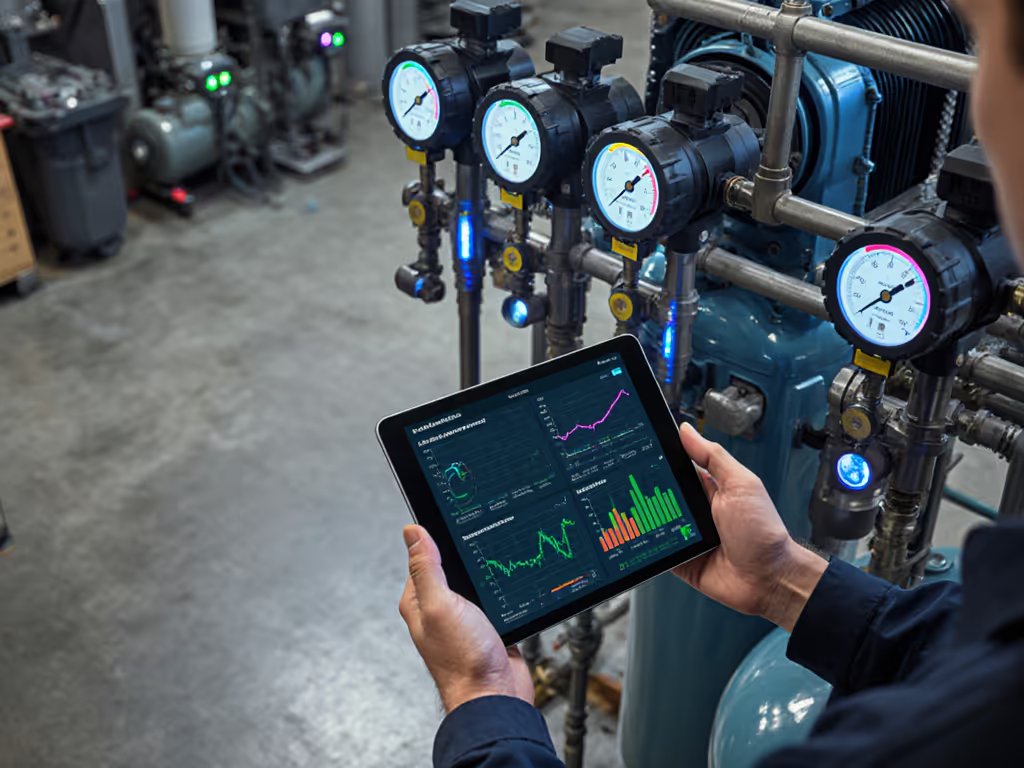
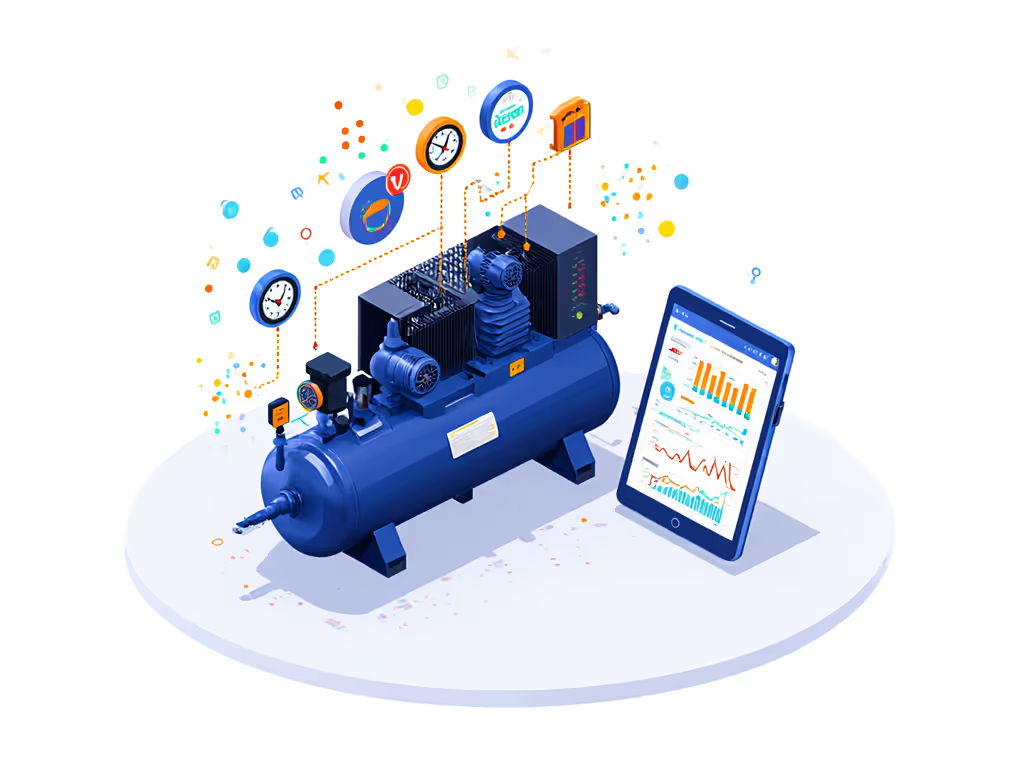
Quiet reduces fatigue and errors; sustainable noise control pays back in throughput and safety. When you understand your compressor's actual performance through smart compressor monitoring, you're not just saving energy, you're creating a workspace where attention lasts longer, work quality improves, and the subtle details that separate professionals from amateurs become possible. That's throughput and focus you can hear.
Related Articles

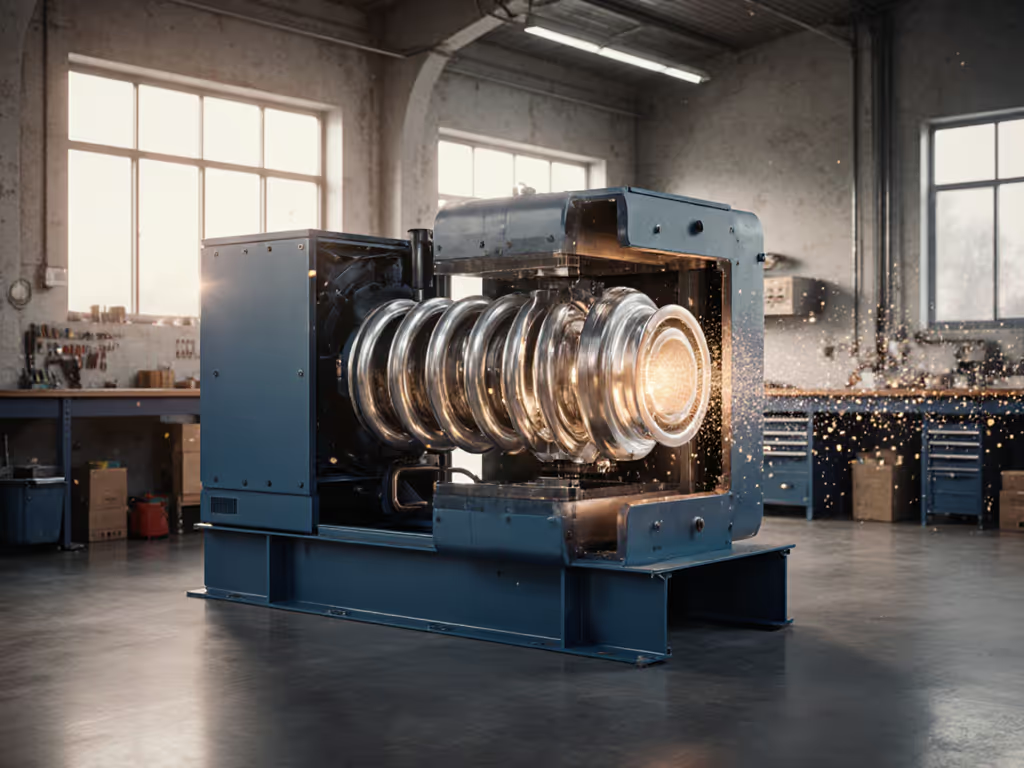
How Scroll Compressors Work: Quiet Oil-Free Air Technology
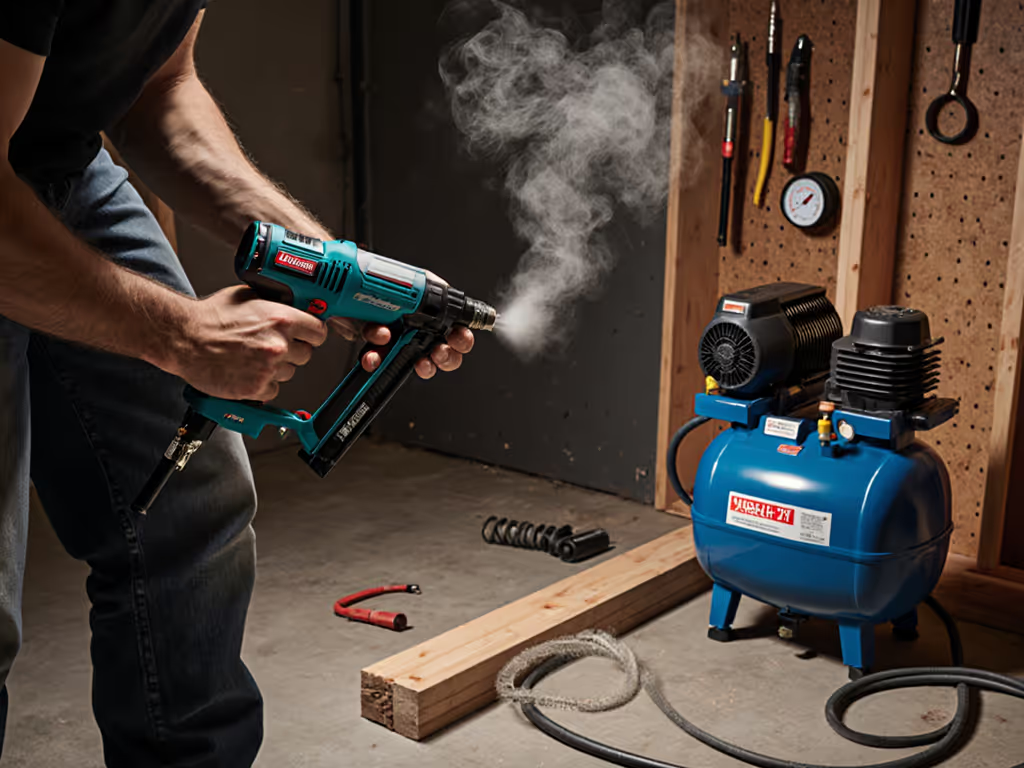
Air Compressor Sizing Guide: Fix CFM Starvation Now
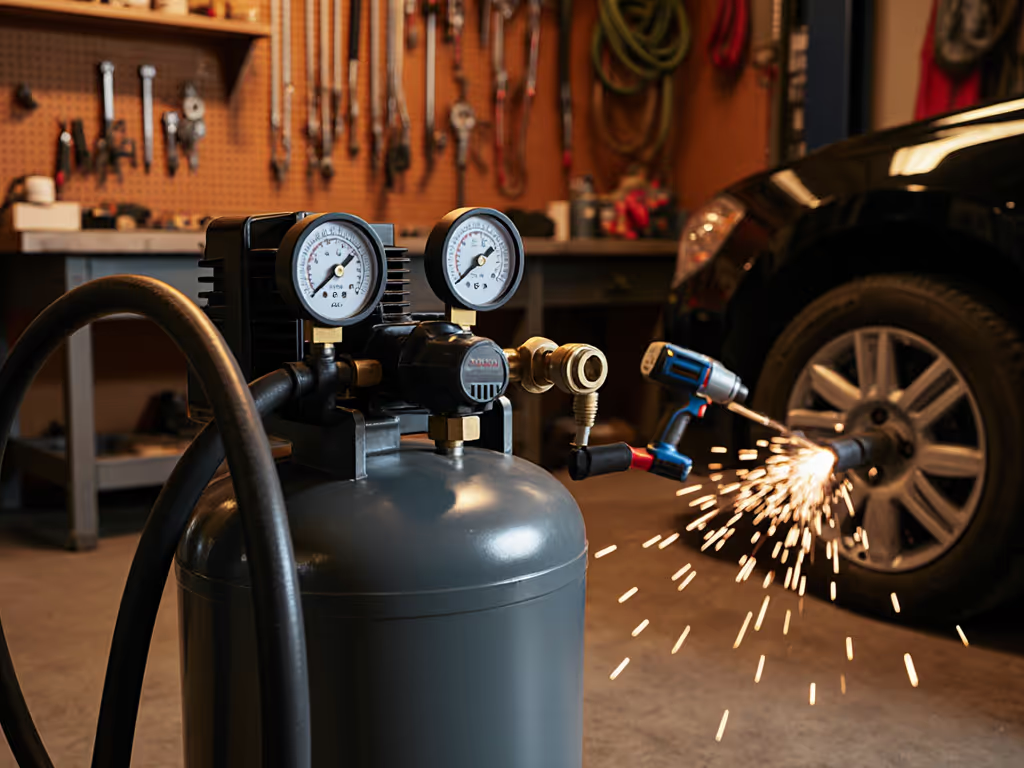
How Air Compressors Work Under Working Pressure
